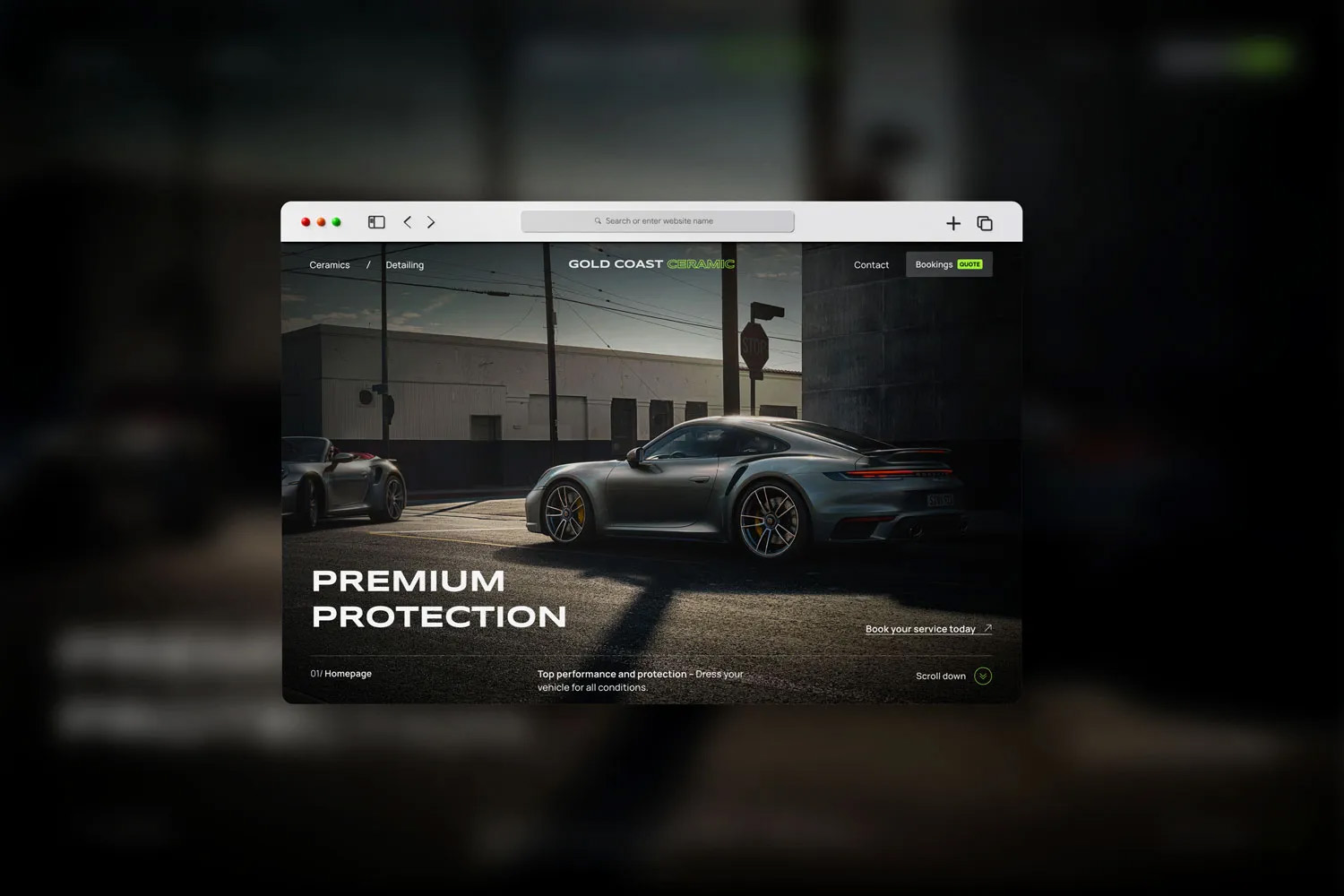When it comes to web design packages, it’s a real minefield. Unless you are a web designer yourself, this can seem quite overwhelming. It’s hard to know which are the most important features to look for in a web design package.
With all the time and effort you’ll invest in your website, you need to make sure you’re including the most critical factors when hiring a web designer to create it. As a business owner, you’ll want to have an advantage when it comes to your website, so knowing which design features to look for in a web design package will ensure you end up with a unique and modern site.
Ensuring compatibility with mobile devices is essential, as a mobile-friendly layout directly impacts user retention and conversion rates. Furthermore, optimization for search engines (SEO) is fundamental for online visibility, helping your site appear in search results and making it easier for search engines to navigate and understand.
Here are the most important features of a web design package that you should look for:
1. Fixed and affordable website package cost
The difference between a website with a fixed cost and one that is “pay as you go” can be huge. Web design companies often offer different design packages that serve as guidelines, but clients may have different needs that require customized solutions. Make sure to choose a package with a fixed cost that is within your budget. Good practice within the web design industry means that your web designer will find out exactly what you need from the start, instead of later, and provide a quote for the entire project based on your requirements. Adding costs as the project progresses is bad practice and will hurt your wallet, except when it comes to additions or new changes you request during the process, which is a possibility.
2. Transparent Web Design Package Prices
Kur bëhet fjalë për investimin në një pako web dizajni, transparenca në çmim është thelbësore. Një kosto fikse për të gjithë projektin eliminon çdo surprizë financiare dhe ju lejon të planifikoni buxhetin në mënyrë efektive. Një kompani e respektuar web dizajni do të ofrojë një ofertë gjithëpërfshirëse që nga fillimi, duke detajuar të gjitha shërbimet e përfshira në pako. Kjo siguron që ju të dini saktësisht për çfarë po paguani dhe shmangni shpenzime të papritura që mund të dëmtojnë buxhetin tuaj. Shmangni web dizajnerët që shtojnë kosto shtesë ndërsa projekti përparon.
3. Customized and unique website
There’s nothing worse than a website that looks the same as all the others. In an overcrowded market, you need to stand out, which means being unique. When choosing a web design package, make sure your website is personalized according to your business style and goals, instead of being a generic copy. This will ensure your site stands out from others and is not identical to competitor websites; if your web designer puts in extra effort at the beginning, you are guaranteed to see results later.
4. Built on strong search engine (SEO) foundation
aving an SEO-friendly website will ensure you can be found by existing and potential customers through search engines like Google. The better the SEO optimizations, the higher your chances of attracting more visitors to your website. If SEO is done properly, it can drastically increase visibility and sales. There’s no point in having a stunning website that potential clients can’t find. When looking for a web design package, make sure it includes SEO services; this can make or break your digital performance.
5. Flexible pages and content
A website should never be static; it should always evolve, just like your business. Your site should change as your business develops and grows. You may adjust your service/product offerings or shift your focus along the way. So, having a website that is easily editable and flexible in terms of pages and content is a must. You may need to add/remove pages and modify/remove content as your business evolves; make sure the web design package includes the option to easily add/remove/edit pages and content.
6. Content Management System
A powerful Content Management System (CMS) is the cornerstone of any effective web design package. A CMS like WordPress gives you the ability to update and make changes to your site without needing to dive into complicated coding. This flexibility is invaluable as your business evolves. However, having a powerful CMS is only half the battle; you also need to know how to use it effectively.
7. Private website management training
Private training for website management will give you the knowledge and skills you need to maximize your site’s potential while saving time and money at the same time. The last thing you need is to be held “hostage” by your web designer, needing to pay extra fees every time you want to edit your site. You should have full access to your website as well as receive the training you need to make changes to it. Investing a lot into something you can’t use is a waste of time and resources. So, make sure the web design package includes a comprehensive training program, offered to you personally or online. Remember, there’s a difference between reading an online manual and having a private training session presented by an expert in the field. Private training for website management will give you the knowledge and skills you need to maximize your site, while also saving time and money.
8. Mobile/tablet and browser friendly
A large portion of internet users browse the web using their mobile devices. Having a site that is mobile and tablet friendly and adapts to your target audience’s preferences will ensure you don’t miss opportunities. If a mobile user can’t easily browse your site from their phone, this will increase the bounce rate with users leaving quickly. The less time they spend on your site, the less likely they are to buy something and for you to make a sale; this will hurt your profit. Make sure the web design package includes adapting your site to all devices and browsers to maximize the time visitors spend on your website.
9. Social media integration
In today’s digital landscape, social media integration is a must-have feature of any web design package. Your site should easily connect with platforms like Facebook, Instagram, and Twitter, making it easy to share content and engage with your audience. This includes incorporating “open graph” data and metadata into your pages, which increases the likelihood of content being shared. A strong social media presence can drive traffic to your website and expand your reach.
10. Website security
With so many cyberattacks on websites, you need strong protection. Website security and regular backups are non-negotiable elements of a reliable web design package. A secure site protects your business from potential threats like hacking and data breaches, which can have devastating consequences. Regular backups ensure that your data is safe and can be restored in case of any issues. This not only protects your business but also ensures your site remains accessible to existing and potential clients.
11. Stock images and image editing
Visuals are a critical component of any successful website. High-quality images can capture visitors’ attention and enhance the overall user experience. However, not all business owners have a gallery of professional images available. This is where stock images and image editing services come into play. Including these services in your web design package can significantly ease the burden of content creation. By focusing on these additional features, you can ensure your web design package is comprehensive, user-friendly, and tailored to meet your business needs.
12. Hosting/ Support and Maintenance
Your website is a constant; its management doesn’t end once it goes live, it must be maintained continuously. Your site will need to be hosted for as long as it exists, and backed up regularly to ensure your information is stored securely and not lost. To ensure your website always stays functional, you will need continuous support and maintenance in case issues arise later. A website that is down means potential lost sales, which is never good for business. So, when choosing a web design package make sure it includes hosting and ongoing support to guarantee that your site is always accessible to existing and potential clients.
With Hostinkos, you get a complete web design package that includes all these services in one place – simple, practical, and without complications.



































 Shqip
Shqip